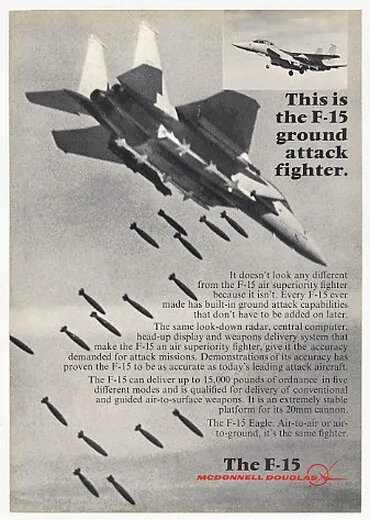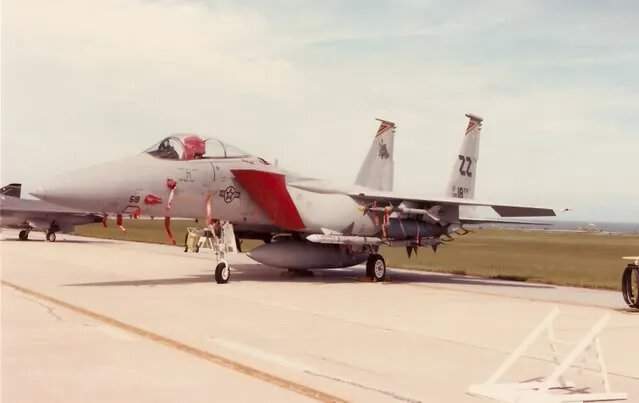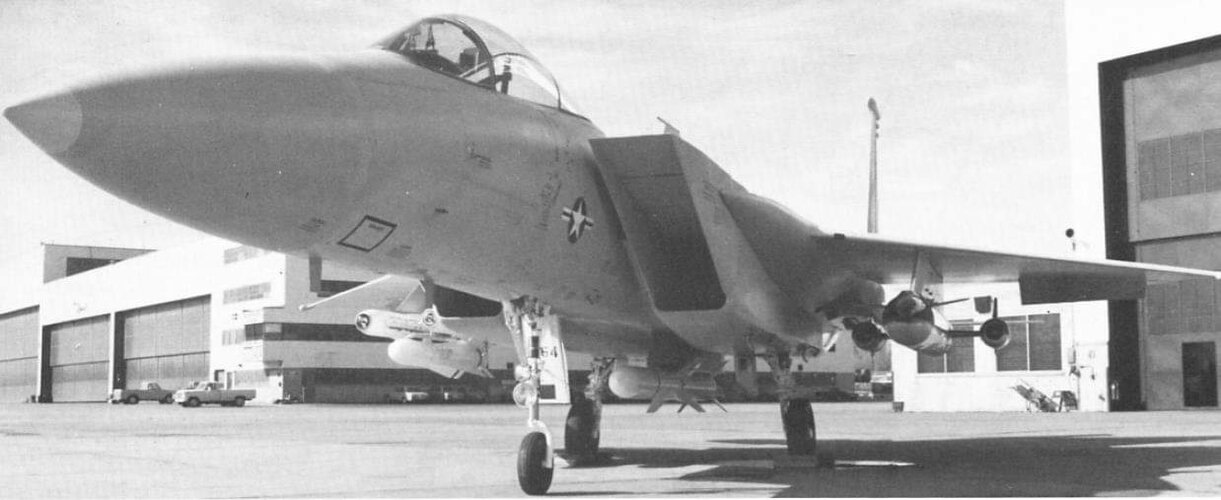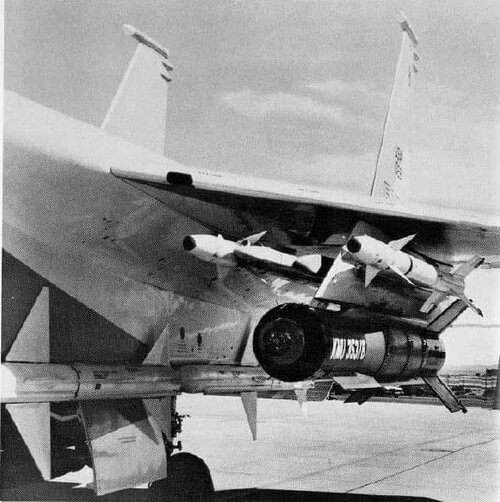isayyo2
Lurker alert
- Joined
- 24 November 2011
- Messages
- 1,131
- Reaction score
- 2,330
Many have read the quote "Not a pound for air to ground" from the F-15 program office during the 70s, though most of us here know the F-15 has always had a latent A-G capability. Paul's post in 2008 shows a few advanced load-outs that MDD whipped up before the F-15E. So, what-if TAC held more sway during the F-15s development to keep it as a true F-4 replacement? A mach 2.5 dual crew fighter-bomber, designed to carry Maverick, HOBOS, Paveway etc in addition to the F-15s air superiority role with TISEO and VTAS.
Would it be too ambitious and face delays, forcing further F-4 modernization?
How would its multirole capability effect the LWF development?
Would it be forced on the Navy?
Would it be too ambitious and face delays, forcing further F-4 modernization?
How would its multirole capability effect the LWF development?
Would it be forced on the Navy?




